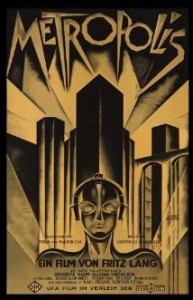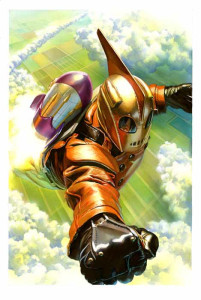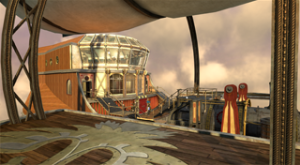Steampunk Voyage
by Bonzo, HSM Guest Contributor
The latest Home challenge top-tier reward is a beautifully designed skyship, heavily rooted in the steampunk genre. An aesthetic style which continues to resurface in multiple mediums, and video games are yet another outlet for artistic expression. So it is little wonder the genre is as prevalent in interactive art as it is in every other form of art? But why do we love this art style so much?
A century is a milestone, which for a culture that follows a record of time marks an end to the past and a beginning of a new era. A year ending in double zeros speaks of possibilities, and the things which came before seem to quickly fade into history. Our lives are temporally limited, and few will ever live a centennial existence.
Many of us were fortunate to have recently crossed not just from the twentieth century to the twenty-first, but also from the last millennium into a new one. We are on the fast track to the future, and if you need more evidence of that than how we have changed as a culture in the ways we live, communicate and interact, just mark it with how quickly you adapt to new technology. It makes you wonder if that sense of awe and curiosity in anticipation of our advancement of technology is what has been the prevalent sentiment at the turn of every century in our modern time.
 The 19th century was certainly a revolutionary period in American and human history. The Industrial Revolution snowballed our evolution into an energy-gluttonous, technologically dependent people. This was the atmosphere from which H.G. Wells, Mary Shelley, Jules Verne and other artists of the time drew inspiration. The zeitgeist of any era is often imprinted in the works of the period’s artists. Thus the sense of fear and wonder, of what machinery and technology could bring to humanity, are major themes in the works of these artists. At the time, mechanics powered by steam were the driving force of machinery and technology, and that makes these artists not only the prophets of science fiction, but the creators of what we now know as steampunk.
The 19th century was certainly a revolutionary period in American and human history. The Industrial Revolution snowballed our evolution into an energy-gluttonous, technologically dependent people. This was the atmosphere from which H.G. Wells, Mary Shelley, Jules Verne and other artists of the time drew inspiration. The zeitgeist of any era is often imprinted in the works of the period’s artists. Thus the sense of fear and wonder, of what machinery and technology could bring to humanity, are major themes in the works of these artists. At the time, mechanics powered by steam were the driving force of machinery and technology, and that makes these artists not only the prophets of science fiction, but the creators of what we now know as steampunk.
Steampunk may seem at times to be a new genre using an old style, but it’s actually an old genre assimilating modern ideas. In literary depiction the work of the aforementioned writers is possibly the earliest depiction of the fantasy fiction; in modern adaptation, the 1927 film Metropolis is possibly the most revolutionary in that genre. Arguably the concepts of Leonardo DaVinci’s machines have also contributed to the genre. While DaVinci’s machines were man-powered mechanics and not steam, his ideas have contributed to the inspiration of this constantly evolving style.
 Steampunk is popular because of its design aesthetics drawing heavily from the English Victorian and the American Western era, but also because it is an adaptive genre. It isn’t rigidly designed with any one time period as a source, but incorporates multiple eras and styles into it. In the Bioshock series, it heavily integrated Art Deco styles from the early 20th century. The Rocketeer draws inspiration from World War Two-era avionics. In modern adaptation the technology isn’t as reliant on steam as a power source, but often utilizes electric, nuclear, or an unspecified source of power.
Steampunk is popular because of its design aesthetics drawing heavily from the English Victorian and the American Western era, but also because it is an adaptive genre. It isn’t rigidly designed with any one time period as a source, but incorporates multiple eras and styles into it. In the Bioshock series, it heavily integrated Art Deco styles from the early 20th century. The Rocketeer draws inspiration from World War Two-era avionics. In modern adaptation the technology isn’t as reliant on steam as a power source, but often utilizes electric, nuclear, or an unspecified source of power.
There is a deep romanticism to this genre because it fits into multiple possibilities: an alternate reality of our cultural history, an adoption of older technology in a post-apocalyptic modern world, or simply in the realm of fantasy fiction, utilizing science and technology that never really existed but seems almost plausible. Regardless of the universe in which it is utilized, it is always a reference to the ingenuity of mankind — and in steampunk the machines are not only utilitarian, but they become art.
The evolution of the genre can be seen in the aesthetics themselves. Earlier steampunk elements were encased in riveted metal plating. Newer adaptations of steampunk always showcase the inner working of the machines rather than trying to hide them in metal casing. You want to show the gears; they becomes design elements, even when unnecessary as part of the mechanics of the machine itself. The integration of metals, woods, leathers and fabrics combine the organic and inorganic into one. Rather than feeling cold and rigid, it helps the elements of steampunk feel earthier. Newer innovations have also taken concepts from cyberpunk, the futuristic counterpart of steampunk. While wearing mechanical contraptions has been an older concept, the merging of mechanics into human anatomy itself is similar to cyborg ideas, but more mechanically-based rather than electronically based.
This genre is beautiful, and continues to draw us in with its evolving aesthetics pulled from over two centuries of artistic movements and technological innovations. It often reverts to the roots of the Victorian era in the 19th century, but continues to adapt with our modern times. Regardless of its implementation, it speaks to us with its romanticism, existing in a fantasy realm from a past which never happened but a universe which seems could very well have existed.
Share
| Tweet |




 Twitter
Twitter